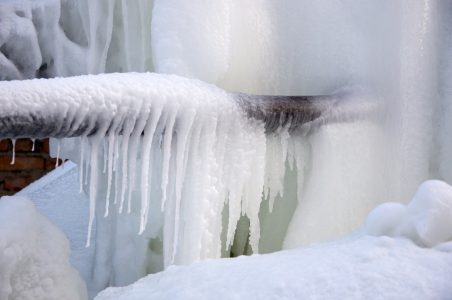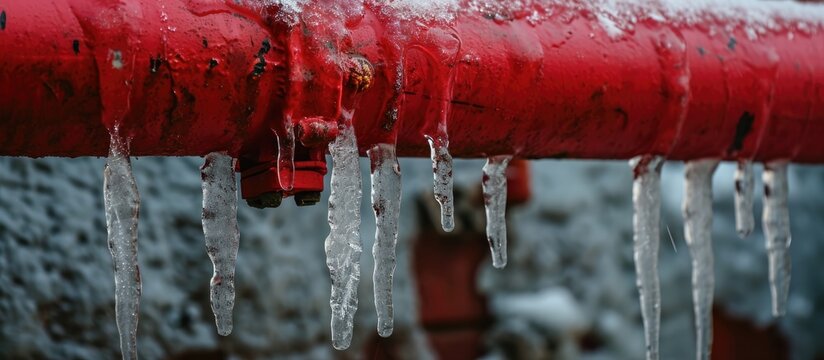Tips for Avoiding Frozen Plumbing in Winter: Expert Insights
Tips for Avoiding Frozen Plumbing in Winter: Expert Insights
Blog Article
They are making a number of good observations related to How To Avoid Freezing Pipes as a whole in the content following next.

Cold weather can wreak havoc on your plumbing, particularly by freezing pipes. Below's just how to prevent it from happening and what to do if it does.
Intro
As temperature levels drop, the threat of icy pipes increases, possibly resulting in pricey repairs and water damages. Recognizing how to stop icy pipelines is important for homeowners in chilly environments.
Prevention Tips
Insulating at risk pipes
Cover pipes in insulation sleeves or utilize heat tape to secure them from freezing temperatures. Concentrate on pipes in unheated or outside locations of the home.
Home heating techniques
Keep indoor rooms effectively warmed, especially areas with pipes. Open up closet doors to permit cozy air to circulate around pipes under sinks.
How to determine icy pipelines
Seek lowered water circulation from taps, uncommon odors or noises from pipes, and visible frost on subjected pipes.
Long-Term Solutions
Structural adjustments
Consider rerouting pipes far from outside wall surfaces or unheated locations. Include additional insulation to attics, basements, and crawl spaces.
Upgrading insulation
Buy high-grade insulation for pipelines, attics, and wall surfaces. Proper insulation helps keep constant temperatures and lowers the danger of icy pipelines.
Safeguarding Exterior Plumbing
Yard hoses and outside faucets
Detach and drain yard pipes before wintertime. Set up frost-proof faucets or cover exterior faucets with protected caps.
Comprehending Frozen Pipelines
What creates pipes to ice up?
Pipes ice up when revealed to temperatures below 32 ° F (0 ° C) for expanded periods. As water inside the pipelines ices up, it increases, taxing the pipe walls and potentially causing them to burst.
Threats and problems
Frozen pipelines can bring about water system disturbances, home damage, and pricey fixings. Burst pipes can flood homes and cause comprehensive architectural damages.
Indicators of Frozen Water Lines
Recognizing frozen pipes early can avoid them from rupturing.
What to Do If Your Pipes Freeze
Immediate activities to take
If you believe icy pipes, maintain faucets open up to relieve stress as the ice melts. Make use of a hairdryer or towels taken in warm water to thaw pipelines slowly.
Verdict
Stopping frozen pipelines needs proactive procedures and quick actions. By understanding the causes, indicators, and preventive measures, home owners can protect their plumbing throughout winter.
5 Ways to Prevent Frozen Pipes
Drain Outdoor Faucets and Disconnect Hoses
First, close the shut-off valve that controls the flow of water in the pipe to your outdoor faucet. Then, head outside to disconnect and drain your hose and open the outdoor faucet to allow the water to completely drain out of the line. Turn off the faucet when done. Finally, head back to the shut-off valve and drain the remaining water inside the pipe into a bucket or container. Additionally, if you have a home irrigation system, you should consider hiring an expert to clear the system of water each year.
Insulate Pipes
One of the best and most cost-effective methods for preventing frozen water pipes is to wrap your pipes with insulation. This is especially important for areas in your home that aren’t exposed to heat, such as an attic. We suggest using foam sleeves, which can typically be found at your local hardware store.
Keep Heat Running at 65
Your pipes are located inside your walls, and the temperature there is much colder than the rest of the house. To prevent your pipes from freezing, The Insurance Information Institute suggests that you keep your home heated to at least 65 degrees, even when traveling. You may want to invest in smart devices that can keep an eye on the temperature in your home while you’re away.
Leave Water Dripping
Moving water — even a small trickle — can prevent ice from forming inside your pipes. When freezing temps are imminent, start a drip of water from all faucets that serve exposed pipes. Leaving a few faucets running will also help relieve pressure inside the pipes and help prevent a rupture if the water inside freezes.
Open Cupboard Doors
Warm your kitchen and bathroom pipes by opening cupboards and vanities. You should also leave your interior doors ajar to help warm air circulate evenly throughout your home.

We had been shown that report about 6 Ways to Prevent Frozen Pipes through someone on our other web address. Kindly take the time to distribute this blog if you liked it. Thank you for your time. Kindly come by our site back soon.
Free Estimate Report this page